Worried about power outages affecting your electronics? Need a straightforward guide to select and utilize a UPS effectively? Making the right choice ensures your devices are safe.
To buy a UPS, first assess your power needs (VA/Watts), desired runtime, and the type of UPS (standby, line-interactive, online). To use it, connect your critical devices, plug the UPS into the wall, and turn it on.
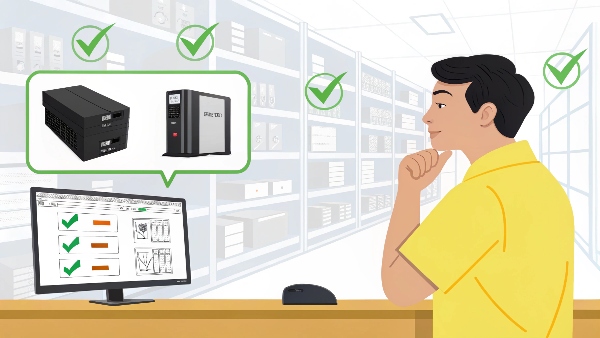
As someone who has spent the last ten years at Daopulse designing and manufacturing UPS systems, I've guided many clients, from individual users to large procurement managers like Mr. Li at a hospital infrastructure company, through this process. The key is to understand your requirements first. My core insight is that UPS batteries have a limited lifespan, and their capacity gradually decreases over time. The specifics depend on whether it's a lead-acid battery or a lithium battery. This understanding is crucial for both purchasing and long-term use. Let's break down how to buy and use a UPS.
Why is my UPS battery low?
Your UPS is beeping, showing a "low battery" warning. You wonder what's causing this. Is it a serious problem, or something simple to fix?
A UPS battery can be low because of a recent power outage, an old battery nearing its end-of-life, an overloaded UPS, or a faulty charging circuit within the UPS itself.
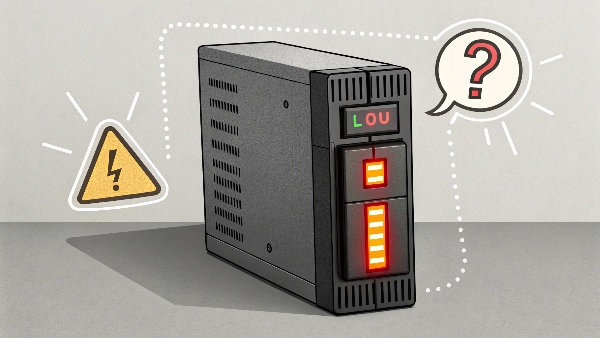
Seeing a "low battery" indication on your UPS can be concerning, but there are several common reasons for it.
- Recent Power Outage: If you've just experienced a power outage, the UPS used its battery to power your connected devices. Naturally, the battery level will be low until it has had time to recharge. This is normal operation.
- Aging Battery: This is a very common cause. As I mentioned earlier, UPS batteries have a limited lifespan. Lead-acid batteries typically last 3-5 years, while lithium batteries can last 8-10+ years. As they age, their ability to hold a full charge diminishes. My insight about their capacity decreasing over time is directly relevant here. If your battery is old, it might show "low" even after ample charging time.
- Overload: If you have too many devices, or devices that draw too much power, connected to the UPS, it can drain the battery faster than expected or prevent it from charging properly. Check the UPS's load capacity (VA/Watts) against the total power draw of your equipment.
- Faulty Charging Circuit: In rarer cases, the charging mechanism within the UPS itself might be malfunctioning. If the battery is relatively new and there hasn't been an outage, and the load is appropriate, this could be the issue.
- Deep Discharge: If the battery was completely drained and left in that state for an extended period, it might have difficulty recovering a full charge.
- Environmental Factors: Very high or very low ambient temperatures can negatively affect battery performance and its ability to charge.
At Daopulse, our UPS systems often include self-test features and battery health indicators to help diagnose such issues. For procurement managers like Mr. Li, who need reliable systems for critical infrastructure, understanding these potential causes is vital for maintenance planning.
| Possible Cause | Action to Take |
|---|---|
| Recent Power Outage | Allow time for the UPS to recharge (several hours). |
| Aging Battery | Check battery age; consider replacement. |
| Overloaded UPS | Reduce the number/power of connected devices. |
| Faulty Charging Circuit | Contact manufacturer/service technician. |
| Deep Discharge | Try a long recharge; may need replacement. |
| Environmental Factors | Ensure UPS operates within recommended temperature. |
What happens when a UPS battery dies?
Your UPS has been reliable for years. But batteries don't last forever. You need to know what to expect when the UPS battery finally gives out.
When a UPS battery dies, the UPS will no longer be able to provide backup power during an outage. Most UPS units will indicate a failed battery with alarms or warning lights.
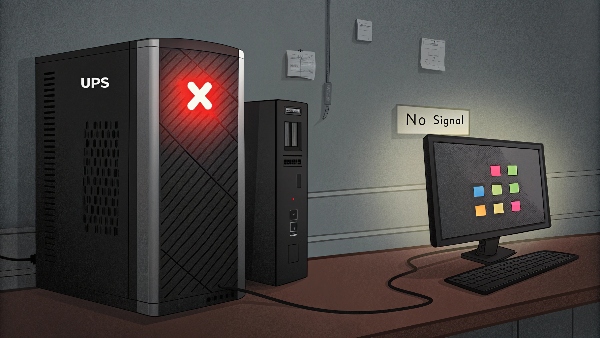
When a UPS battery reaches the end of its useful life and "dies," its ability to store and deliver power is severely compromised or completely gone. Here's what typically happens:
- No Backup Power: This is the most critical consequence. If a power outage occurs, the UPS will not be able to switch to battery power, and your connected equipment will shut down abruptly, just as if it were plugged directly into the wall. The primary purpose of the UPS is lost.
- Warning Indicators: Most modern UPS units are designed to detect battery failure. You'll likely hear an audible alarm (often a continuous beep or a specific pattern) and see warning lights on the UPS panel. Some smart UPS systems might also send notifications if they are connected to a computer or network.
- UPS May Still Pass Through Power: Even with a dead battery, many UPS units will continue to pass mains power through to your connected devices as long as utility power is available. Some might even continue to offer surge protection. However, this is not guaranteed, and some models might shut down completely.
- Reduced Performance or Unpredictability: Before a battery completely dies, you might notice shorter-than-expected runtimes during outages.
My insight that UPS battery capacity diminishes over time is crucial here. The "death" of a battery is often a gradual process, not always a sudden event, though it can feel that way if you're not monitoring it. Ignoring warning signs of a failing battery means you're running without a safety net. For system integrators and procurement managers, proactively replacing batteries based on their expected lifespan is a key part of maintaining system reliability. At Daopulse, we emphasize the importance of battery maintenance schedules to our clients.
When should you replace the battery in your UPS system?
You want to keep your UPS working well. Knowing the right time to change the battery is important. Waiting too long can leave you unprotected when you need it most.
Replace your UPS battery when the UPS indicates a bad battery, when runtime is much shorter, or every 3-5 years for lead-acid and 8-10+ for lithium, even if it seems okay.
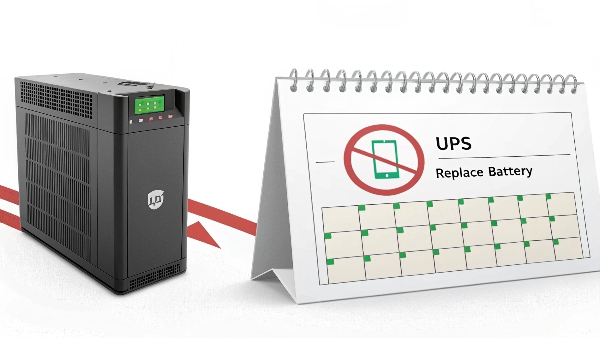
Knowing when to replace your UPS battery is key to ensuring continuous protection. Here are the main indicators:
- UPS Alarms and Notifications: Most UPS systems have built-in diagnostics that monitor battery health. If your UPS starts beeping with a specific "replace battery1" alarm or shows a corresponding LED, take it seriously. This is the most direct sign.
- Reduced Runtime: If you notice that the UPS can only power your equipment for a much shorter time during an outage than it used to, the battery is likely degrading. My insight about battery capacity decreasing over time perfectly explains this phenomenon. Perform a self-test (if your UPS has one) or a controlled test by unplugging the UPS from the wall (with non-critical load) to see how long it lasts.
-
Scheduled Replacement2 (Proactive Approach): This is often the best strategy, especially for critical systems.
- For Sealed Lead-Acid (SLA) batteries: Plan to replace them every 3 to 5 years, regardless of whether they are showing overt signs of failure. Environmental factors like high temperatures can shorten this interval.
- For Lithium-ion batteries: These have a longer lifespan, typically 8 to 10 years or even more. Check the manufacturer's recommendations.
- Physical Signs (Less Common but Possible): In rare cases, a failing lead-acid battery might show physical signs like swelling, cracking, or leaking. If you see this, replace it immediately and handle it with care.
- After a Deep Discharge or Over-Temperature Event: If the UPS battery was completely drained and left uncharged for a long time, or if the UPS operated in extreme heat, the battery's health might be permanently compromised, warranting an earlier replacement.
At Daopulse, we advise our clients, particularly those in sectors like healthcare or data centers, to adopt proactive battery replacement schedules to minimize risk. Waiting for a battery to fail completely before replacing it means accepting a period of vulnerability.
What are the ways to get inquiries for the UPS and batteries?
As a business in the UPS industry, generating leads is vital. You are looking for effective strategies to connect with potential customers who need your power solutions.
To get UPS and battery inquiries, focus on digital marketing (SEO, PPC, content), industry networking (trade shows, partnerships), direct outreach to target clients, and excellent customer service for referrals.
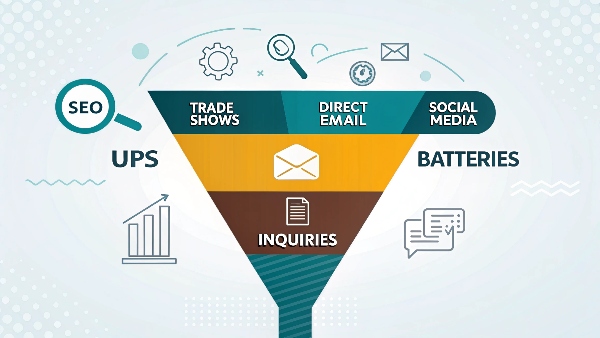
As a leading OEM/ODM manufacturer, Daopulse employs a multi-faceted approach to generate inquiries. For businesses like ours, or for wholesalers and retailers in this space, here are some effective strategies:
- Digital Marketing:
- Search Engine Optimization (SEO): Optimize your website and content with relevant keywords like "buy UPS," "lithium battery UPS," "UPS for data center," etc., so potential clients find you on Google. Creating helpful blog posts (like this one!) answering common customer questions is a great SEO tactic.
- Pay-Per-Click (PPC) Advertising: Run targeted ad campaigns on search engines and social media to reach specific demographics and industries.
- Content Marketing: Develop valuable content like white papers, case studies, webinars, and videos that address the pain points of your target audience (e.g., procurement managers, system integrators).
- Email Marketing: Build an email list and nurture leads with informative newsletters and product updates.
- Industry Networking and Partnerships:
- Trade Shows and Conferences: Exhibit at industry-relevant events to showcase your products and connect directly with potential buyers.
- Partnerships: Collaborate with complementary businesses (e.g., IT hardware suppliers, electrical contractors, system integrators) for cross-referrals.
- Industry Associations: Join relevant associations to build credibility and network.
- Direct Outreach:
- Targeted Sales: Identify key decision-makers in your target industries (e.g., Mr. Li, Procurement Manager at a Hospital Infrastructure Company) and reach out with tailored solutions.
- LinkedIn and Professional Networks: Use platforms like LinkedIn for prospecting and building relationships.
- Excellent Customer Service and Reputation:
- Referrals and Testimonials: Happy customers are your best advocates. Encourage reviews and testimonials.
- Building Trust: Emphasize certifications (CE, RoHS, ISO) and quality assurance, as these are crucial for clients looking for reliable suppliers.
Understanding the client's needs is paramount. For example, a procurement manager needs certified, customizable solutions and efficient supply chains. Tailoring your messaging and channels to address these specific needs will yield the best results.
Conclusion
Buying and using a UPS involves understanding your needs, choosing the right type, and maintaining its battery. This ensures reliable power protection for your valuable electronic equipment.

